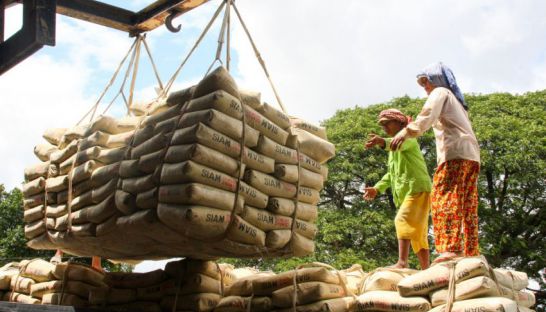New cement plants to max out production capacity
New cement plants to max out production capacity
Two large cement plants are expected to begin operations by the end of the year, according to a state official, who said the Kingdom has reached its limit for domestic cement production and the government will stop issuing new licences in order to protect dwindling natural resources.

Hort Pheng, director of the Industrial Affairs Department at the Ministry of Industry, said Chip Mong Insee – a joint venture between local conglomerate Chip Mong Group and Thailand’s Siam Cement Group – was preparing to open its $262 million cement plant in Kampot province next month. This will be the Kingdom’s fourth cement production facility, with the almost-completed Battambang Conch Cement factory – a joint venture between Cambodian and Chinese investors – slated to be the fifth.
He said the new cement plants will add to the production capacity of the three existing licences held by Kampot Cement, Cambodia Cement Chakrey Ting, and Thai Boon Roong – all three of which are located in Kampot province.
Pheng said the ministry had capped the number of cement production licences despite the high level of investor interest.
“We can only provide licences for five companies,” Pheng said. “Despite investors coming to ask us for potential locations for cement plants, the ones in Kampot and Battambang are enough as the other provinces lack the quality of limestone needed for cement production.”
The licence cap only applies to production facilities. While companies must obtain production licences from the Ministry of Industry, quarry permits are issued by the Ministry of Mines and Energy.
Pheng said once all five cement producers are fully operational their combined output should come close to meeting domestic demand for cement, but the booming construction sector would still need to import cement to fill orders and meet project specifications.
“Our cement plants will be able to meet the demand of the construction sector and those that are operational can increase production lines to keep up,” he said. “However, domestic cement is still not of the quality for the use in building foundations that include pilings.”
Heng Sinsiphat, deputy general manager of Battambang Conch Cement, said that while his company’s plant was scheduled to open in December, construction is currently “stuck” and its completion could be delayed. He declined to identify what was hampering construction, but said once finished the plant would be capable of producing 5,000 tonnes of cement a day.
“We plan to supply the domestic market first before we consider the export market for Vietnam, Laos and Thailand,” he said.
Tieng Sopheak Vichea, public and government relations manager at Chip Mong Insee Cement, said the company’s $262 million plant will also have a production capacity of 5,000 tonnes a day, but is on track for an October opening.
“The cement market is a good opportunity for us,” he said. “Even with five factories, prices will remain stable as long as there is continued growth in the construction sector and because this is our first plant we are not worried about a shortage of natural resources.”













